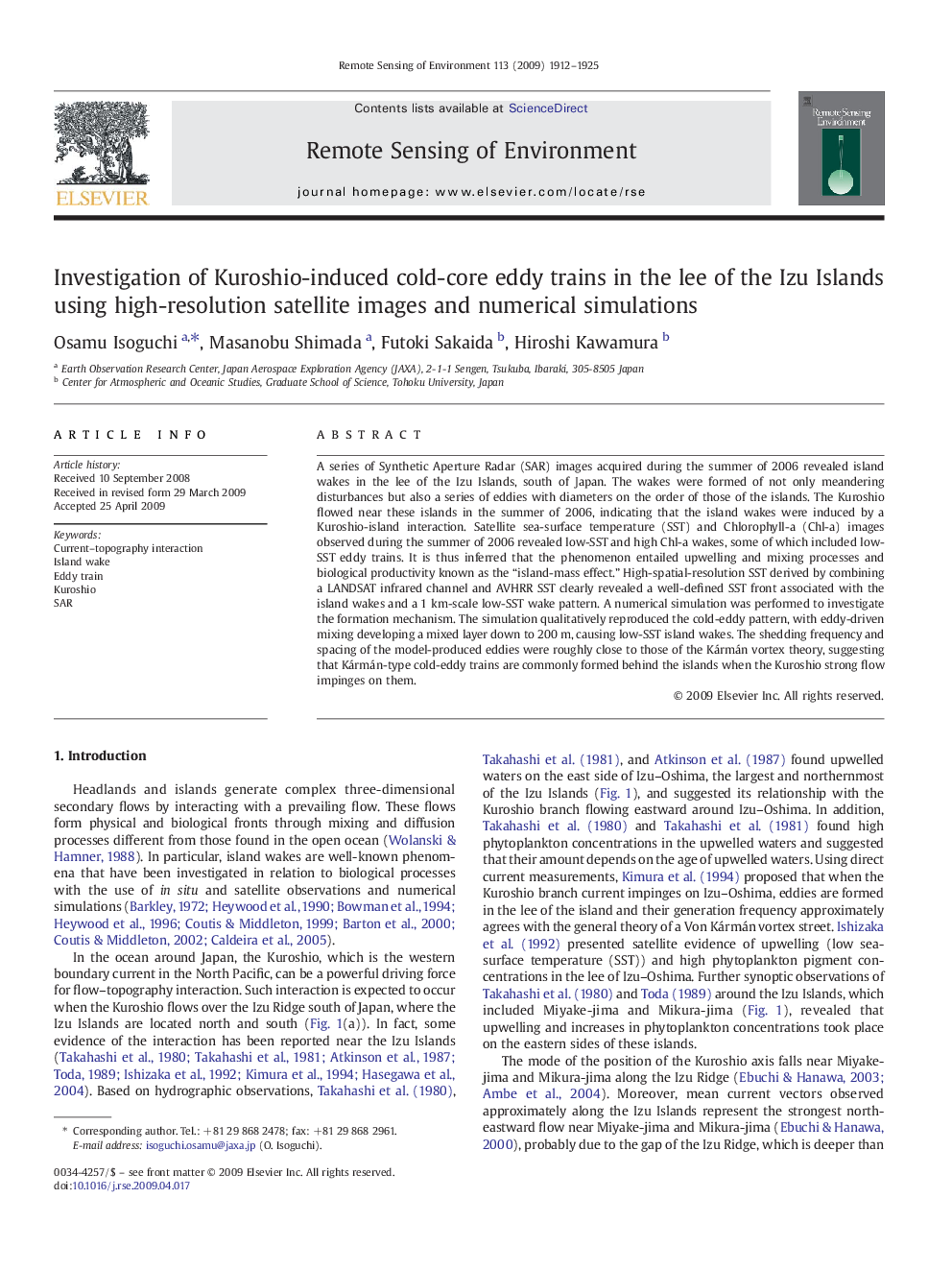| Article ID | Journal | Published Year | Pages | File Type |
|---|---|---|---|---|
| 4460157 | Remote Sensing of Environment | 2009 | 14 Pages |
A series of Synthetic Aperture Radar (SAR) images acquired during the summer of 2006 revealed island wakes in the lee of the Izu Islands, south of Japan. The wakes were formed of not only meandering disturbances but also a series of eddies with diameters on the order of those of the islands. The Kuroshio flowed near these islands in the summer of 2006, indicating that the island wakes were induced by a Kuroshio-island interaction. Satellite sea-surface temperature (SST) and Chlorophyll-a (Chl-a) images observed during the summer of 2006 revealed low-SST and high Chl-a wakes, some of which included low-SST eddy trains. It is thus inferred that the phenomenon entailed upwelling and mixing processes and biological productivity known as the “island-mass effect.” High-spatial-resolution SST derived by combining a LANDSAT infrared channel and AVHRR SST clearly revealed a well-defined SST front associated with the island wakes and a 1 km-scale low-SST wake pattern. A numerical simulation was performed to investigate the formation mechanism. The simulation qualitatively reproduced the cold-eddy pattern, with eddy-driven mixing developing a mixed layer down to 200 m, causing low-SST island wakes. The shedding frequency and spacing of the model-produced eddies were roughly close to those of the Kármán vortex theory, suggesting that Kármán-type cold-eddy trains are commonly formed behind the islands when the Kuroshio strong flow impinges on them.
